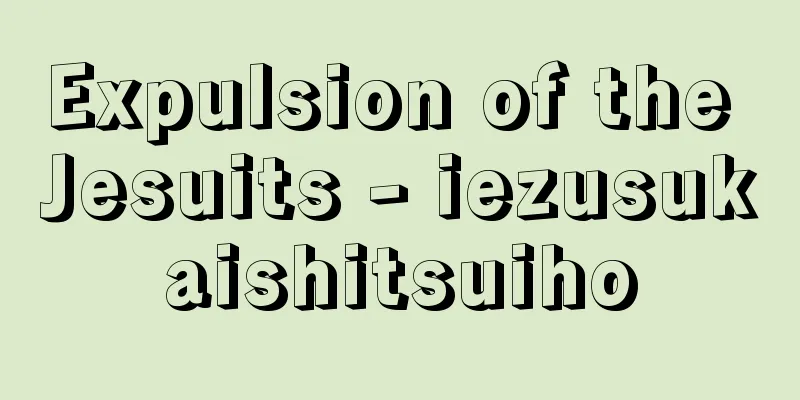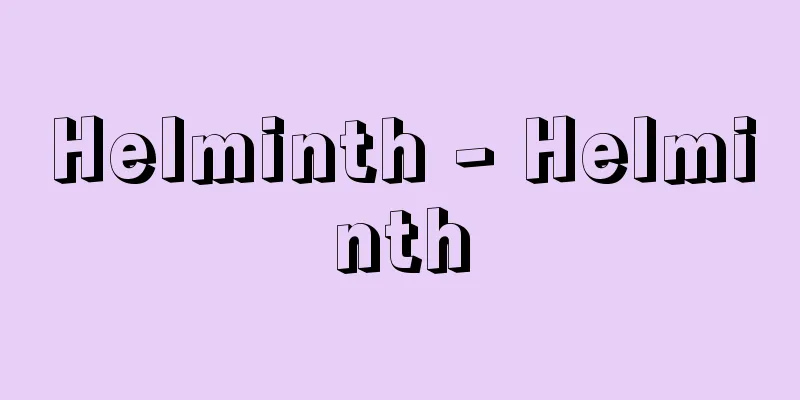Tengu - Tengu

|
A supernatural creature said to live in the mountains. In China, the trailing meteors or comets are likened to heavenly dogs or foxes, while in Buddhism they are considered to be demons or yakshas. In Japan, Buddhism was first accepted as mountain Buddhism, and Shugendo, which was linked to indigenous beliefs, developed, but the image of a Shugendo practitioner, or yamabushi, is strongly reflected in the Japanese tengu. Tengu are generally thought of as having a red face, a high nose, sharp eyes, and a bird-like beak, or as a yamabushi priest wearing feathers or holding a feather fan, and being able to fly freely in the sky. They have long claws on their hands and feet, carry a kongo staff or a sword, and are said to have supernatural powers. These figures are a reflection of the mountain ascetics who practice in the deep mountains and the impressions of birds of prey such as eagles, hawks and black kites. Tengu's personality is also characterized by strong emotional ups and downs, being full of self-confidence and sometimes arrogant, but on the other hand, they are extremely fastidious and seek purity. The fact that there are two types of tengu, large tengu and small tengu, also known as crow tengu and leaf tengu, is probably a reflection of the way mountain ascetics practice under the guidance of a guide. When a person suddenly goes missing, they are said to have been spirited away. Before the Middle Ages, people were said to have been taken away by eagles or demons, but since the early modern period, there has been a sharp increase in cases of people being abducted by tengu. There are records of children who were abducted by tengu returning home several days later, or telling stories of their experiences flying through the air. It seems that much of the modern image of tengu was formed in the early modern period. If you broadly divide yokai into those based on beliefs in divine spirits and those based on beliefs in ancestral spirits, tengu belong to the latter. While retaining many elements that were brought over from China, it appears that they absorbed the characteristics of mountain gods by incorporating them into ancestral spirit beliefs. For this reason, there are many examples of Tengu being worshiped as deities or messengers of the gods at places such as Kashozan Miroku-ji Temple in Numata City, Gunma Prefecture, Furumine Shrine in Kobugahara, Tochigi Prefecture, and other shrines and temples associated with Shugendo. When Tengu have completely transformed into monsters, various stories of their power and strangeness are passed down. One of them is that they kidnap children, but there are also stories of Tengu-taoshi and Tengu-bayashi in the deep mountains of various regions. Tengu-taoshi is a strange phenomenon in which the sound of cutting trees in the middle of the night is heard, followed by the sound of a large tree falling, but when you go back the next morning, the fallen tree is nowhere to be found, while Tengu-bayashi is when you hear the sound of festival music coming from nowhere. The strong impression of village festivals and the sense of anticipation from cutting trees for festival pavement are likely linked to Tengu and have turned into strange stories. Other stories include Tengu calling out "Hey, hey" in the mountains, and stones flying out of nowhere being called Tengu's bullets. There is also a fairy-tale about the "hiding straw raincoat and hat" (Minokasa), which has been made into a joke. Once upon a time, a child put his lunch in a "menpa" and went to the mountains. He saw a tengu and looked through the "menpa" and lied, saying he could see Kyoto and the five-story pagoda. The tengu asked to borrow it, so the child exchanged it for a hidden straw raincoat and hat. The tengu looked through but could not see anything, and realized he had been tricked and looked for the child, but he could not find him because he was wearing the hidden straw raincoat and hat. The child used the hidden straw raincoat and hat to steal food. One day, the mother burned the straw raincoat and hat. The child smeared the ashes on his body and drank from a sake shop, but the ashes around his mouth came off and he was discovered, and he jumped into the river and revealed his true identity. The legend includes tengu pine (a tree where tengu live), and in some places, when a house is built and a gohei (a sacred wand) is erected in the middle of the roof to worship Tengosama (the god of tengu). [Shoji Inoguchi] "Life in the Mountains" (included in "The Complete Works of Yanagita Kunio Vol. 4", 1967, Chikuma Shobo) "Japanese Folk Beliefs" by Shoji Inokuchi (1975, Kobundo) [Reference] | |Mirokuji Temple, known as a temple of Tengu faith, has dedicated several large Tengu masks. The largest one (left photo) is 6.5m in size and has a nose height of 2.8m. Numata City, Gunma Prefecture © Numata City Commerce, Industry and Tourism Division "> Great Tengu mask from Mirokuji Temple Source: Shogakukan Encyclopedia Nipponica About Encyclopedia Nipponica Information | Legend |
|
山中に住むといわれる妖怪(ようかい)。中国では、流星または彗星(すいせい)が尾を引いて流れるようすを、天のイヌまたはキツネに例え、仏教では夜叉(やしゃ)や悪魔のように考えられていた。日本では仏教を、当初は山岳仏教として受け入れ、在来の信仰と結び付いた修験道(しゅげんどう)を発達させたが、日本の天狗には修験道の修行者(しゅぎょうじゃ)=山伏(やまぶし)の姿が色濃く投影している。一般に考えられている天狗の姿は、赤ら顔で鼻が高く、眼光鋭く、鳥のような嘴(くちばし)をもっているか、あるいは山伏姿で羽根をつけていたり、羽団扇(はうちわ)を持っていて自由に空を飛べるといったりする。手足の爪(つめ)が長く、金剛杖(づえ)や太刀(たち)を持っていて神通力があるともいう。これらの姿は、深山で修行する山伏に、ワシ、タカ、トビなど猛禽(もうきん)の印象を重ね合わせたものである。また天狗の性格は、感情の起伏が激しく、自信に満ちてときに増上慢(ぞうじょうまん)であるが、一方では清浄を求めてきわめて潔癖である。天狗に大天狗と、烏(からす)天狗や木(こ)っ葉(ぱ)天狗などとよばれる小天狗との別があるというのも、山伏が先達(せんだつ)に導かれながら修行するようすを投影したものであろう。 人が突然行方不明になることを、神隠しにあったという。中世以前はワシや鬼に連れ去られたといったが、近世以後は天狗にさらわれたという事例が急増する。天狗にさらわれた子供が数日たって家に戻ってきたり、空中を飛んだ経験を話して聞かせたなどの記録が残っている。近代の天狗のイメージには、近世に形成されたものが多いようである。妖怪を御霊(ごりょう)信仰系のものと祖霊(それい)信仰系のものとに大別すると、天狗は後者に属する。中国伝来の諸要素を多く残しながら、祖霊信仰に組み入れることによって山の神の性格を吸収したのであろう。そのため群馬県沼田市の迦葉山弥勒寺(かしょうざんみろくじ)、栃木県古峯原(こぶがはら)の古峯(ふるみね)神社、そのほか修験道系統の社寺において、天狗を御神体もしくは使令(つかわしめ)(神様のお使い)として信仰する例が多い。 天狗がまったく妖怪化した段階では、種々の霊威・怪異の話が伝承されている。子供をさらって行くというのもその一つであるが、各地の深山で天狗倒し・天狗囃子(ばやし)などの話がある。天狗倒しは、夜中に木を伐(き)る音、やがて大木の倒れる音がするが、翌朝行ってみるとどこにも倒れた木がないという怪異現象であり、天狗囃子は、どこからともなく祭囃子の音が聞こえてくるというものである。村祭りの強烈な印象や、祭りの鋪設(ほせつ)のための伐木から祭りへの期待感が、天狗と結び付いて怪異話に転じたものであろう。そのほか、山中で天狗に「おいおい」と呼ばれるとか、どこからともなく石の飛んでくるのを天狗のつぶてということがある。昔話では、かなり笑話化されているが「隠れ蓑笠(みのかさ)」というのがある。むかし、ある子供が「めんぱ」に弁当を入れて山へ行く。天狗がいるので「めんぱ」でのぞき、京が見える、五重塔が見えると欺く。天狗が貸せというので隠れ蓑笠と交換する。天狗はのぞいてみたが何も見えないので、だまされたと気づいて子供を探すが、隠れ蓑笠を着ているのでみつからない。子供は隠れ蓑笠を使って盗み食いする。あるとき母親が蓑笠を焼いてしまう。灰を体に塗り付けて酒屋で盗み飲みすると、口の周りの灰がとれて発見され、川へ飛び込んで正体が現れるといった類の話である。伝説には天狗松(天狗の住む木)などがあり、民家建築の棟上げのとき、棟の中ほどに御幣(ごへい)を立ててテンゴウサマ(天狗様)を祭る所もある。 [井之口章次] 『『山の人生』(『定本柳田国男集4』所収・1967・筑摩書房)』▽『井之口章次著『日本の俗信』(1975・弘文堂)』 [参照項目] | |天狗信仰の寺として知られる弥勒寺には、いくつもの大天狗面が奉納されている。最大のもの(写真左)は面の大きさ6.5m、鼻の高さ2.8m。群馬県沼田市©沼田市商工観光課"> 弥勒寺の大天狗面 出典 小学館 日本大百科全書(ニッポニカ)日本大百科全書(ニッポニカ)について 情報 | 凡例 |
>>: Electric rocket; electrical propulsion systems
Recommend
Scrotum (English spelling)
It is an organ unique to mammals, and is not found...
Karroo system
A geological formation consisting mainly of contin...
Bullhead shark
...The name comes from the fact that its face res...
Aito [town] - Aito
A former town in Aichi County, in the central-east...
Skirōn (English spelling) Skiron
…The Procrustean bed, which is still used today t...
watch
〘noun〙 (watch)① A pocket watch. Wristwatch. Often ...
Interval - kukan (English notation) interval
A mathematical term. a and b are two real numbers,...
Syncretism
It refers to the act and result of trying to compr...
Priyayi (English spelling)
Originally a Javanese word meaning the youngest br...
Chikugo [city] - Chikugo
A city in the southeast of the Tsukushi Plain in s...
Nozawana (Nozawana) - Nozawana
A one- to two-year-old vegetable of the Brassicace...
Mass (English)
A mass is a heterogeneous group of many people wh...
Vladimir Ivanovich Nemirovich‐Danchenko
1858‐1943 A Russian and Soviet theater figure. He ...
Hippōnax (English spelling) Hipponax
…Years of birth and death unknown. His “mimos” ar...
Tsuiki [town] - Tsuiki
A former town in Chikujo District, eastern Fukuoka...







![Sutlej [River] - Sutlej](/upload/images/67cbad2778576.webp)

